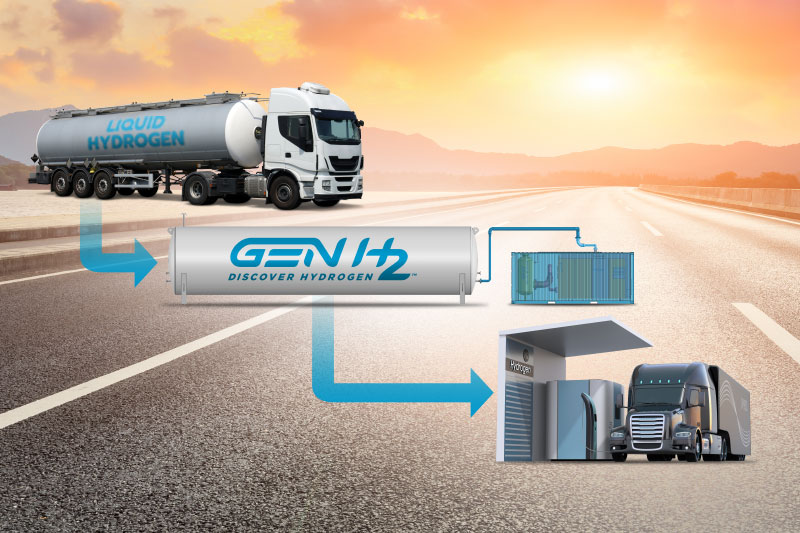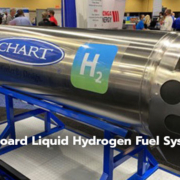Speed Hydrogen Adoption with Distributed Infrastructure
By: GenH2 Staff
Read Time: 2 minutes
As the world continues to move towards cleaner energy options, hydrogen’s usefulness as an energy carrier is being more widely recognized. However, for Hydrogen to fully move into the spotlight, new forms of infrastructure are needed to make it more accessible and affordable. One way to speed adoption is to build and leverage distributed hydrogen infrastructure (DHI). Currently, most hydrogen infrastructure is comprised of large, customized systems. Distributed Hydrogen Infrastructure uses smaller, dispersed all-in-one systems to serve localized businesses or individual communities. Using a DHI strategy will allow users to control their energy supply by accessing hydrogen when and where it is needed.
Distributed hydrogen infrastructure combines production, liquefaction, storage, and transfer processes into a single, connected system that serves localized networks. DHI extends hydrogen’s reach by dispersing these systems across a wide range of areas that otherwise would not have hydrogen access or require limited hydrogen quantities.
There are many perks when using distributed hydrogen infrastructure and system versatility is the most beneficial feature. The versatility of DHI systems can be credited to their regional adaptability. Although the individual process units may be standardized, each standalone, self-sustaining system can be custom-built to serve specific geographic, testing, or commercial needs Additionally, these complete hydrogen systems can be built and used anywhere, which helps significantly with infrastructure rollout and accessibility. The standalone infrastructure can also be built using scalable components that allow each system to grow as demand increases.
Enhanced grid security is another critical benefit that can be attained by using a distributed infrastructure strategy. Multiple distributed systems can be connected in a way that each facility can operate independently. The DHI systems can form networks to compensate if one system goes offline or if demand suddenly surges.
In addition to versatility, accessibility, and added security, distributed infrastructure can reduce the costs required to transport hydrogen, offering a feasible solution in previously unreachable areas. Smaller scale DHI systems can also reduce initial capex investment to further aid in speeding up infrastructure rollout. Additional land savings can also be obtained by using liquid hydrogen as its density provides higher energy output in a much smaller footprint.
To enable mass adoption, liquid hydrogen infrastructure systems must be as unique as the communities and businesses that use them. Distributed hydrogen infrastructure provides the necessary flexibility and scalability essential to achieving a clean energy future.
GenH2 manufactures infrastructure solutions for the liquid hydrogen value chain with a focus on portable, light-scale hydrogen liquefaction, storage, and transfer to accelerate widescale rollout for advanced clean energy. To learn more about how GenH2 is revolutionizing hydrogen infrastructure, see our LS20 Mobile Liquid Hydrogen System press release!











